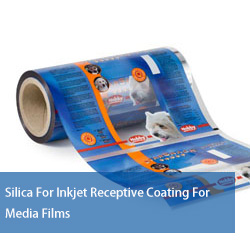1, 2, 3, etc. are mirror images of electron probe analysis of the state of occurrence of each element in the slag.

Fig.1 Electron probe diagram of the occurrence state of each element in the slag

Figure 2 S in the slag in the state of the electron probe map A

Figure 3 S in the slag in the state of the electron probe map B
Electron microprobe analyzes in Table 1 Ore magnet.
Table 1 Electron probe analysis of magnetite (mass fraction, %)
Numbering | TFe | SiO 2 | CaO | Al 2 O 3 | K 2 O | MgO | ZnO | Pb | MnO | TiO 2 | As 2 O 3 | CuO | Na 2 O |
1 | 65.57 | 4.527 | 0.819 | 0.998 | 0.504 | 0.709 | 0.807 | 0.372 | 0.164 | 0.090 | 0.096 | 0.039 | 0.015 |
2 | 66.13 | 3.878 | 0.476 | 0.655 | 0.741 | 0.384 | 0.417 | 0.492 | 0.189 | 0.064 | 0.070 | 0.045 | 0.028 |
In order to find out whether the structure of magnetite in the slag is different from that of natural magnetite, the X-ray diffraction analysis of the magnetite in the slag is carried out and compared with the X-ray diffraction curve of natural magnetite. 4, 5). There is no significant difference in the structure of magnetite and natural magnetite in the slag. The electron probe diagram shows that the monomer crystals of magnetite are mostly in the form of continuum in the slag. There are two main forms of common continuum: one is semi-self-shaped, its shape is crystallized with hematite, and red Iron ore continuous, common hematite is attached to the magnetite in a thin layer or magnetite and hematite are connected in parallel. Most of these continuum bodies can be recovered by weak magnetic separation method, which is beneficial to improve the magnetic separation recovery rate; the other is that the magnetite is impregnated, honeycomb-shaped, filled with fine gangue and magnetite is sheathed. Gangue stone. Due to the large number of such symbiotic bodies of magnetite and gangue minerals, it is necessary to use an effective method to destroy such continuum before sorting.

Figure 4 Magnetite X-ray diffraction curve in pyrite cinder

Figure 5 Natural magnetite X-ray diffraction curve
The results in Table 2 show that although the purity of the hematite particles in the slag is higher than the purity of the magnetite particles in the slag, the hematite particles also contain some impurities, and the extremely fine particles of the independent minerals are attached to the magnetite particles. . Hematite heterogeneity in the slag is relatively significant, with long strips, elliptical shapes, and most of them are connected to the living body, and the voids are filled with gangue. The crystal form of hematite is very poor, most of which are in the form of crystals, semi-automorphic crystals, and often appear in continuous bodies and inclusions. In the microstructure, the hematite in the ash is similar to the natural hematite, but the microscopic specific gravity and hardness are smaller than the natural hematite. Its texture is very loose and broken, and it has many honeycomb and dip-like structures. It generally has no crystal shape, is loose and porous, and is combined in the form of top, powder and gel.
Table 2 Hematite electron probe analysis (mass fraction, %)
Numbering | TFe | SiO 2 | CaO | Al 2 O 3 | K 2 O | MgO | ZnO | Pb | MnO | TiO 2 | As 2 O 3 | CuO | Na 2 O |
1 | 67.67 | 2.442 | 0.279 | 0.568 | 0.126 | 0.685 | 0.327 | 0.299 | 0.264 | 0.142 | 0.166 | 0.007 | 0.006 |
2 | 67.13 | 1.857 | 0.365 | 0.374 | 0.087 | 0.556 | 0.258 | 0.433 | 0.137 | 0.008 | 0.062 | 0.029 | 0.014 |
The main gangue minerals in the slag are quartz and serpentine. Quartz is colorless and transparent under a polarizing microscope, without cleavage, and is mostly semi-self-shaped, and it is granular. The particle size varies from 30 to 100 μm, and most of the particles are contaminated with iron minerals. Common quartz particles are encapsulated by minerals to form a hull, and a large part of fine-grained quartz is also contained in the iron mineral. Serpentine is the gangue mineral which is second only to quartz in the slag, and is a yellow-brown, fine-grained, sheet-like aggregate. Most serpentine surfaces also contaminate iron minerals. Such gangue mineral particles contaminated with iron minerals are highly accessible to iron mineral products during flotation separation, which makes the separation effect worse.
Matting Agent For Inkjet Receptive Coating For Media Films
Our matting agents' main material is silica dioxide, a natural material that can be found in quartz or sand.
We change the original silica dioxide's chemical parameters to make it turn into different types silica
Matting Agent that are suitable to use in different using areas.
We provide various types of silica matting agent that are used in wood coatings, inks, industrial coatings, coil coatings,plastic coatings, UV curing coatings, leather coatings, E-coats ,matte paper coatings and powder coatings.
We focus on the matting agent about 25 years, knowing exactly the customer`s requirement, and have most experience to offer service and technical solution to the customers. We have strict control of the quality; the physical index and performance are strictly tested before delivery. Will ensure that stable products of different batch. Compare to International and the other Chinese Supplier, our products has better performance, stable quality and cost efficient.

7631-86-9 Pure Silica,7631-86-9 Nano SiO2,7631-86-9 Nano Silica,Super Silica
Guangzhou Quanxu Technology Co Ltd , https://www.inkjetcoating.com